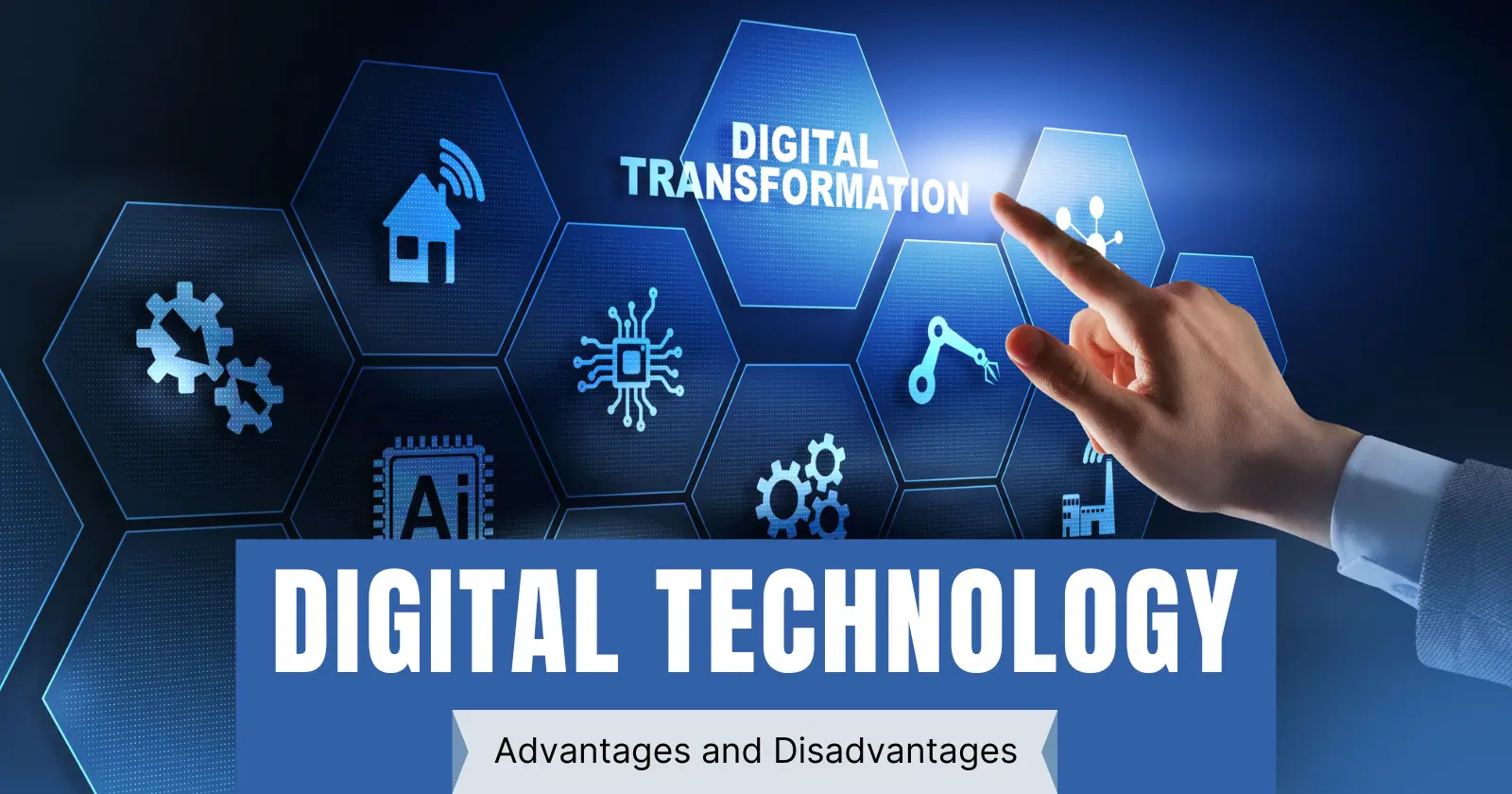Table of Contents
ToggleIntroduction
In today’s fast-paced world, digital technology is a driving force behind transformation and innovation. From the smartphones in our pockets to the cloud computing services that power global businesses, digital technology has become an integral part of our daily lives. But what exactly is digital technology, and how is it shaping the future? This comprehensive guide will explore the essence of digital technology, its various applications, its impact on society, and what lies ahead.
What is Digital Technology?
Digital technology refers to electronic systems that use discrete (as opposed to continuous) data, primarily in binary form, to perform tasks and solve problems. This encompasses a broad range of technologies, including computers, smartphones, digital cameras, and the Internet. At its core, digital technology transforms information into binary code (0s and 1s), which can be easily processed, stored, and transmitted.
Key Components of Digital Technology:
- Binary Code: The foundation of digital technology, binary code represents data using only two symbols, typically 0 and 1. This simple yet powerful system allows for complex data processing and communication.
- Hardware: Physical devices such as computers, servers, and smartphones that perform various functions based on digital technology.
- Software: Programs and applications that run on digital hardware, enabling users to perform tasks, from word processing to gaming.
- Networking: Systems and protocols that allow digital devices to communicate with each other, including the Internet, local area networks (LANs), and wireless networks.
- Data Storage: Technologies that store data in digital formats, including hard drives, SSDs, and cloud storage solutions.
The Evolution of Digital Technology
Digital technology has evolved dramatically over the decades. From the early days of massive, room-sized computers to today’s sleek, portable devices, the progression has been marked by rapid advancements and increasing accessibility.
- Early Computers: The first digital computers, like the ENIAC and UNIVAC, were developed in the mid-20th century. These machines were large, expensive, and primarily used by governments and research institutions.
- Personal Computers: The late 1970s and early 1980s saw the rise of personal computers, making digital technology accessible to individuals and small businesses. Companies like Apple and IBM played pivotal roles in this era.
- Internet and Connectivity: The 1990s introduced the World Wide Web, revolutionizing how people access and share information. This period marked the beginning of widespread digital communication and online commerce.
- Smart Technology: The 2000s and beyond have been characterized by the proliferation of smart devices, including smartphones, tablets, and smart home products. This era has also seen significant advancements in artificial intelligence (AI) and machine learning.
Applications of Digital Technology
Digital technology permeates various aspects of modern life, impacting how we work, communicate, and entertain ourselves. Here’s a look at some key areas where digital technology plays a critical role:
- Healthcare: Digital technology has transformed healthcare with innovations like electronic health records (EHRs), telemedicine, and wearable health monitors. These advancements enhance patient care, streamline operations, and facilitate remote consultations.
- Education: In education, digital technology supports online learning platforms, interactive educational tools, and virtual classrooms. These resources make education more accessible and personalized.
- Business: Businesses leverage digital technology for everything from e-commerce and digital marketing to data analytics and customer relationship management (CRM). These tools help companies operate more efficiently and reach a global audience.
- Entertainment: Digital technology revolutionizes entertainment with streaming services, video games, and social media platforms. These technologies provide diverse and interactive experiences for users.
- Transportation: Smart technology enhances transportation systems with innovations like GPS navigation, ride-sharing apps, and autonomous vehicles. These advancements improve efficiency and safety on the roads.
- Smart Homes: Digital technology enables smart home devices such as smart thermostats, security systems, and voice-controlled assistants, making homes more convenient and energy-efficient.
The Impact of Digital Technology on Society
Digital technology has significantly reshaped society, bringing both opportunities and challenges. Here are some key impacts:
- Economic Growth: Digital technology drives economic growth by creating new industries, jobs, and business models. The tech sector contributes significantly to GDP in many countries.
- Communication: The rise of digital communication tools has transformed how people connect, enabling instant messaging, video calls, and social networking. This has fostered global connections and collaboration.
- Privacy and Security: With increased digital connectivity comes concerns about privacy and security. Cybersecurity measures are essential to protect personal and organizational data from breaches and cyberattacks.
- Digital Divide: Despite the widespread adoption of digital technology, there remains a digital divide between those with access to technology and those without. Bridging this gap is crucial for ensuring equitable opportunities.
- Cultural Changes: Digital technology influences culture through social media trends, online communities, and digital art forms. This has led to the creation of new cultural norms and expressions.
Future Trends in Digital Technology
The future of digital technology promises even more transformative advancements. Here are some emerging trends to watch:
- Artificial Intelligence (AI): AI continues to evolve, with applications in natural language processing, computer vision, and autonomous systems. AI has the potential to revolutionize industries and everyday life.
- Quantum Computing: Quantum computing aims to solve complex problems beyond the capabilities of classical computers. This technology could revolutionize fields such as cryptography, materials science, and drug discovery.
- 5G and Beyond: The rollout of 5G networks promises faster and more reliable connectivity. Future advancements in wireless technology may further enhance communication and enable new applications.
- Internet of Things (IoT): IoT refers to the network of interconnected devices that communicate and exchange data. This technology is set to expand, leading to more smart devices and integrated systems.
- Blockchain: Blockchain technology offers secure and transparent ways to record transactions and manage data. Its potential applications include digital currencies, supply chain management, and smart contracts.
- Augmented Reality (AR) and Virtual Reality (VR): AR and VR technologies are creating immersive experiences in gaming, education, and training. These technologies are expected to become more mainstream and versatile.
Conclusion
Digital technology is a dynamic and ever-evolving field that profoundly impacts our lives. From its historical roots to its current applications and future possibilities, understanding digital technology is essential for navigating the modern world. As we look ahead, embracing digital advancements while addressing associated challenges will be crucial for maximizing their benefits.
Call-to-Action: Stay informed about the latest developments in digital technology by subscribing to our newsletter, following us on social media, and engaging with our content. Explore how digital technology can enhance your life and career, and join the conversation about its future!
Meta Description: Explore the comprehensive guide on digital technology, covering its definition, evolution, applications, societal impact, and future trends. Understand how digital technology shapes modern life and discover its potential for innovation.





